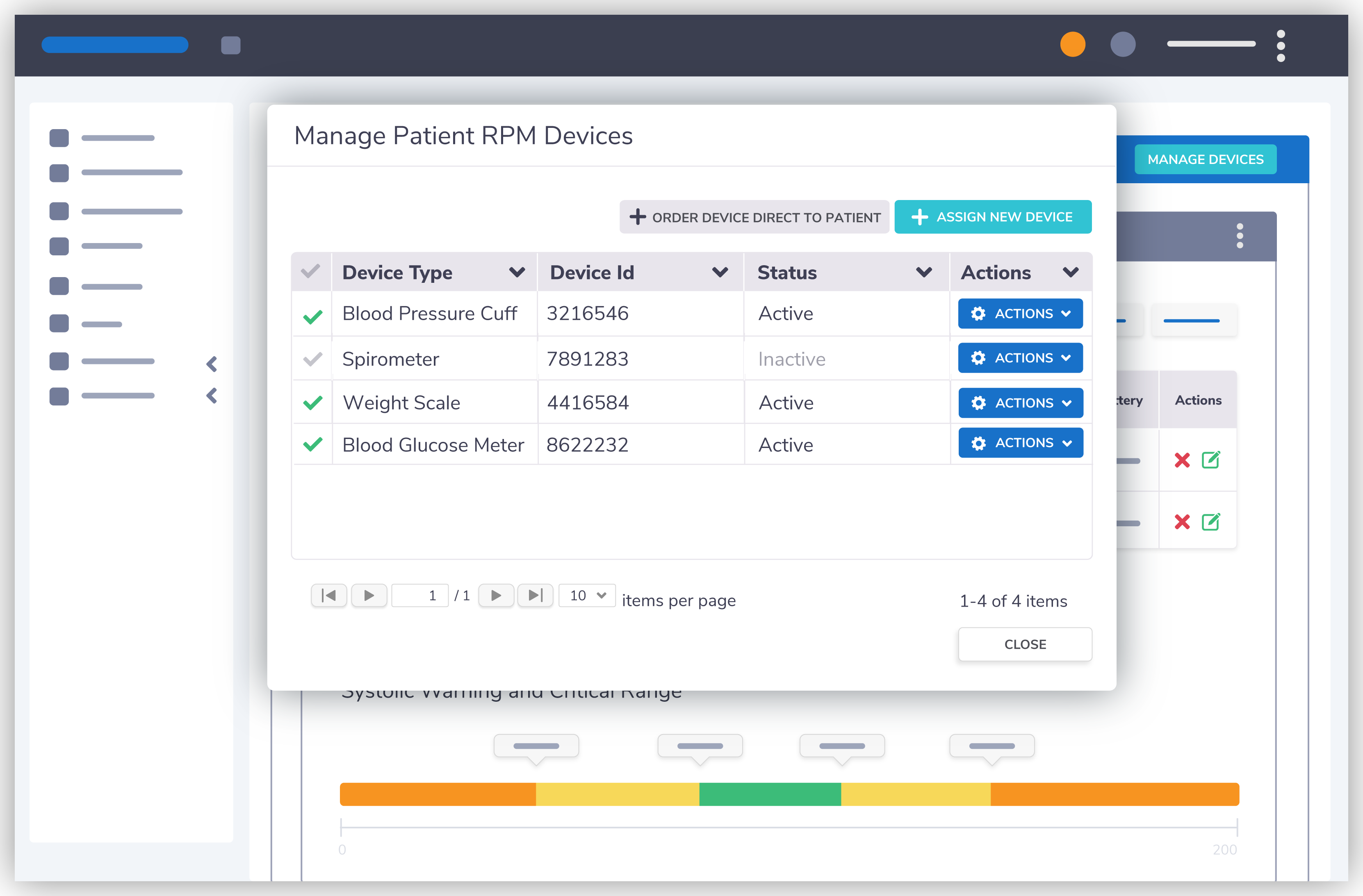Innovative RPM Software: Transforming Patient Tracking in Health Care
Innovative RPM Software: Transforming Patient Tracking in Health Care
Blog Article
The Future of Medical Care: Remote Individual Monitoring Simplified
As health care continues to progress, one location that holds enormous assurance is remote patient monitoring. With a focus on enhancing client outcomes and improving health care shipment, remote tracking is poised to transform the market.
Advantages of Remote Patient Monitoring
Remote patient tracking presents a wide variety of benefits for both healthcare service providers and patients alike. In addition, remote individual monitoring improves the total quality of treatment by providing a much more all natural and extensive sight of patients' health and wellness standing beyond standard in-person visits.
Furthermore, remote person monitoring can result in better patient outcomes and contentment. Patients can take pleasure in the ease of obtaining care in the comfort of their own homes while still recognizing that their wellness is being closely kept track of. This can lead to raised patient engagement and adherence to treatment plans, eventually causing far better health outcomes. Additionally, remote tracking can minimize the demand for constant health center visits, lowering healthcare costs for both clients and companies. On the whole, the benefits of remote individual surveillance are clear, making it a useful device in modern-day medical care distribution.
Modern Technology Driving Remote Surveillance
In the world of modern healthcare, technical innovations play an essential role in driving the evolution and performance of remote individual tracking. The combination of innovative modern technologies such as wearable gadgets, mobile applications, and cloud-based platforms has revolutionized the means health care service providers remotely handle and keep track of person wellness - remote patient monitoring software. These modern technologies make it possible for continual real-time tracking of vital indications, medicine adherence, and other critical health and wellness information, permitting prompt interventions and customized treatment plans
One trick technology driving remote surveillance is the Internet of Points (IoT), which makes it possible for seamless connection in between medical gadgets and medical care systems. IoT devices such as smartwatches and wireless sensing units transfer and accumulate patient data to central platforms, promoting remote monitoring from throughout the globe. Expert system (AI) and artificial intelligence formulas better enhance remote tracking by assessing vast amounts of person data to identify patterns, predict wellness trends, and alert medical care service providers to prospective issues.
Impact on Medical Care Delivery
With the combination of innovative technologies driving remote person monitoring, the impact on healthcare delivery is becoming increasingly profound and transformative. Remote person surveillance permits medical care carriers to supply even more individualized and positive like patients, leading to boosted wellness results and decreased medical facility admissions. By remotely tracking vital indicators, signs, and medication adherence, healthcare specialists can step in early, avoiding complications and boosting the general quality of treatment.
Additionally, remote tracking enhances accessibility to healthcare solutions, especially for individuals in country or underserved areas. Individuals can get continual tracking and support from their homes, removing the need for constant in-person brows through. This not only saves time and minimizes costs for both people and health care centers however also lessens the risk of direct exposure to infectious conditions, a vital consideration in the existing healthcare landscape.
In addition, remote patient surveillance enables medical care service providers to far better prioritize and allocate sources treatment based upon real-time information. By recognizing high-risk individuals and interfering quickly, medical care delivery ends up being a lot more efficient and reliable, ultimately causing an extra lasting and patient-centered healthcare system.
Improving Individual Results

Moreover, RPM allows for proactive management of chronic conditions, reducing the possibility of acute exacerbations and healthcare facility readmissions. Individuals gain from enhanced benefit and comfort, as they can receive care in their own homes while remaining attached to their doctor. This continual tracking not only improves client see here now complete satisfaction yet likewise fosters a feeling of empowerment and involvement in their own wellness management.
Future Trends in Remote Surveillance
Accepting advanced technologies in remote patient surveillance is shaping the future landscape of healthcare distribution. The future patterns in remote monitoring are anticipated to reinvent the way medical care is supplied, making it much more reliable and patient-centric. One significant fad is the boosted use wearable tools and sensors to accumulate real-time data, making it possible for health care suppliers to keep track of people constantly without the demand for regular in-person visits. These gadgets can track vital indications, medication adherence, and activity degrees, offering a thorough view of the person's health condition.

Moreover, telehealth platforms are ending up being extra sophisticated, enabling virtual examinations, remote medical diagnosis, and remote client checking done in one integrated system (remote patient monitoring software). This alternative strategy to remote monitoring is improving health care distribution, boosting patient complete satisfaction, and eventually, boosting overall quality of care
Final Thought
In verdict, remote patient tracking uses countless benefits in healthcare delivery, driven by developments in modern technology. It has the possible to boost patient outcomes and transform the way healthcare is provided. Future patterns in remote tracking will certainly remain to form the landscape of healthcare, providing opportunities for more efficient and personalized client care.
Remote client surveillance offers a plethora of advantages for both healthcare providers and patients alike. Additionally, remote patient surveillance improves the general quality of treatment by offering a more comprehensive and all natural sight of individuals' health and wellness status past standard in-person check outs.
Furthermore, remote patient surveillance that site can lead to enhanced patient end results and fulfillment. Remote client surveillance enables healthcare carriers to use more tailored and positive care to individuals, leading to improved wellness outcomes and minimized medical facility admissions. Remote person monitoring (RPM) plays a substantial role in boosting patient end results by providing constant, real-time data that makes it possible for healthcare suppliers to step in promptly and change therapy plans as needed.
Report this page